The table of contents for the rest of this paper, . 4A Layman's Guide to Anthropogenic Global Warming (AGW) is here. Free pdf of this Climate Skepticism paper is here and print version is sold at cost here
We have gotten well into this paper, and we still have not
discussed what is perhaps the most problematic aspect of AGW research:
the computer models.
If an economist came up with a computer model that he claimed could predict
the market value of every house in the world in the year 2106 within $1,000,
would you believe him? No, you would say he was nuts -- there is way too
much uncertainty and complexity. Climate, of course, is not the same as
housing prices. It is in fact, much, much more complex and more difficult
to predict. There is nothing wrong with trying to predict the complex and
chaotic. But there is a certain sense of hubris in believing that one has
succeeded with the kind of 95% certainty figures used by the IPCC.
All climate forecasting models are created by a pretty insular and
incestuous climate science community that seems to compete to see who can come
up with the most dire forecast. Certainly there are financial incentives
to be as aggressive as possible in forecasting climate change, since funding
dollars tend to get channeled to those who are the most dramatic.
The global warming community spends a lot of time with ad hominem attacks
on skeptics, usually accusing them of being in the pay of oil and power
companies, but they all know that their own funding in turn would dry up
rapidly if they were to show any bit of skepticism in their own work.
The details of these models is beyond the scope of this paper.
However, it is important to understand how they work in broad outlines.
The modelers begin with certain assumptions about climate that they build
into the model. For example, the computers themselves don't somehow
decide if CO2 is a more important forcing on the climate than solar activity "“
the modelers, by the assumptions the feed into the model, decide these
things. The models return the result that CO2 is the most important
driver of climate in the coming century because their programmers built them
with that assumption, not because the model somehow sorts through different
inputs and comes up with the key drivers on its own.
Because the models have been built to test man's possible impact on the
climate via greenhouse gas emissions, they begin with an econometric forecast
of world economic growth, and, based upon assumptions about fuel sources and
efficiencies, they convert this economic growth into emissions forecasts.
The models generally contain subroutines that calculate, again based upon a
variety of assumptions, how man-made CO2 plus other inputs will change the
atmospheric CO2 concentration. Then, via assumptions about climate
sensitivity to CO2 and various feedback loops programmed in, the models will
create forecasts of temperatures, precipitation, etc. These models,
depending on their complexity, will show regional variations in many of these
variables. Finally, the models are tuned so that they better match
history, in theory making them more accurate for the future.
One should note that while the IPCC asked modelers to look at a series of
different cases, the only substantial difference between these cases is the
volume of CO2 and other greenhouse gasses produced. In other words, the
only sensitivity the IPCC seriously modeled was on levels of CO2. No
other contingency "“ e.g. potential variations in global temperature sensitivity
to CO2, solar output, land use "“ were considered. This should give you an
idea of how hard-wired the anthropogenic causation is in the IPCC process.
In this section, I will begin by discussing the models' basic assumptions
about the climate. I will then discuss the econometric forecasts they are
founded on, the assumptions about CO2 sensitivity and feedback processes, and
finally model tuning and their ability to match history.
At any one time, thousands of people are being paid literally millions of
dollars on Wall Street to try to model the behavior of various stock indices
and commodity prices. The total brain power and money power thrown over
the last 50 years at trying to build an accurate predictive model for financial
markets literally dwarfs, by a factor of 100 or more, the cumulative resources
spent to date on long-term climate modeling. Financial markets are
incredibly complex, and they are driven by hundreds of variables.
Interest rates, corporate profits, loan default rates, mortgage refinance
rates, real estate prices, GDP growth, exchange rates, etc. all tend to drive
the behavior of financial markets. And no one has cracked the code.
Sure, some people have built successful short-term trading models, but people
have mostly lost their shirts when they have tried to make long-term bets based
on computer financial models that beautifully matched history but failed to
accurately predict the future.
How is it possible that a model that accurately represents the past fails to
accurately predict the future? Financial modelers, like climate modelers,
look to history in building their models. Again, like climate modelers,
they rely both on theory (e.g. higher interest rates should generally mean
lower stock prices) as well as observed correlations in the historic data
set. The problem they meet, the problem that every modeler meets but most
especially the climate modeler, is that while it is easy to use various
analysis tools to find correlations in the data, there is often nothing that
will tell you if there is really a causal relationship, and which way the
causality runs. For example, one might observe that interest rates and exchange
rates move together. Are interest rate changes leading to exchange rate
adjustments, or vice versa? Or, in fact, are they both caused by a third
variable? Or is their observed correlation merely coincidence?
It was once observed that if an old AFL football team wins the Superbowl, a
bear market will ensue on Wall Street in the next year, while an NFL team
victory presaged a bull market. As of 1997, this correlation held for 28
of the last 31 years, a far better prediction record than that of any Wall
Street analyst. But of course this correlation was spurious, and in the
next 4 years it was wrong every time. Had someone built a financial model
on this indicator, it would have looked great when he ran it against history,
but he would have lost his shirt using it.
Want a better prediction record? For seventeen straight US
presidential election cycles, from 1936 to 2000, the winner of the election was
accurately predicted by"¦the Washington Redskins. In particular, if the
Redskins won their last home game before the election, the party that occupies
the White House holds it in the election. Otherwise, if the Redskins
lose, the opposition party wins. Seventeen in a row! R-squared of
one! Success against odds of 131,072:1 of guessing all 17 right.
But of course, the input was spurious, and in 2004, soon after this
relationship made the rounds of the Internet, the algorithm failed.
This is why we spent so much time in the previous chapter on evaluating
historic correlations between CO2 and temperature. Because the models are
built on an assumption that not only is temperature strongly correlated with
CO2, but that temperature is historically highly stable without this outside
anthropogenic forcing. If there are problems with this assumed causation,
which we saw there are, then there in turn are major inherent problems with the
models themselves. As climate scientist Syun-Ichi Akasofu of the
International Arctic Research Center at University of Alaska Fairbanks wrote:
The computers are "taught" that the temperature
rise during the last hundred years is due mostly to the greenhouse effect. If
the truth is that only about 10% of the present warming is caused by the
greenhouse effect, the computer code must be rewritten
Remember what I said earlier: The models produce the result that there
will be a lot of anthropogenic global warming in the future because they are
programmed to reach this result. In the media, the models are used as a
sort of scientific money laundering scheme. In money laundering, cash
from illegal origins (such as smuggling narcotics) is fed into a business that
then repays the money back to the criminal as a salary or consulting fee or
some other type of seemingly legitimate transaction. The money he gets
back is exactly the same money, but instead of just appearing out of nowhere, it
now has a paper-trail and appears more legitimate. The money has been
laundered.
In the same way, assumptions of dubious quality or certainty that presuppose
AGW beyond the bounds of anything we have see historically are plugged into the
models, and, shazam, the models say that there will be a lot of anthropogenic
global warming. These dubious assumptions, which are pulled out of thin
air, are laundered by being passed through these complex black boxes we call
climate models and suddenly the results are somehow scientific proof of
AGW. The quality hasn't changed, but the paper trail looks better, at
least in the press. The assumptions begin as guesses of dubious quality
and come out laundered at "settled science." Climate
Scientists Garth Paltridge wrote:
It needs to be understood that any reasonable
simulation even of present climate requires computer models to be tuned. They contain
parameters (that is, pieces of input information) whose numerical values are
selected primarily to give the right answer about today's climate rather than
because of some actual measurement. This was particularly so in the
mid-eighties. The problem with tuning is that it makes any prediction of
conditions different from those of the present far less believable. Even today
the disease of "tuneable parameters" is still rampant in climate
models, although fairly well hidden and not much spoken of in polite society.
The scientifically-inclined reader might try sometime asking a climate
researcher just how many such parameters there are in his or her latest model.
The reader will find there are apparently lots of reasons why such a question
is ridiculous, or if not ridiculous then irrelevant, and if not irrelevant then
unimportant. Certainly the enquirer will come away having been made to feel
foolish.
Econometrics and
CO2 Forecasts
The IPCC has never been able to choose a particular climate model it thinks
is best. Instead, it aggregates ten or twelve of them and averages their
results, hoping that if there are errors in the climate models, they will
average out somehow (forgetting that systematic errors don't average out, as we
discussed earlier in the context of historic temperature
reconstructions). The one thing the IPCC does do to bring some order to
all this is to establish baseline econometric and emissions scenarios for all
the teams to feed into the front end of their models. That way, for a given
forecast case, they know variation in model output is due to differing
climate-related assumptions rather than differing economic assumptions.
But a funny thing happens when one tries to make an economic growth forecast
for 100-year periods, as the IPCC has: Very small changes in assumptions make
enormous differences. Here is a simple example. An economy that
grows by 3% per year will be 19x larger in 100 years. However, if that
economy were to grow instead by 4% rather than 3%, it will be 51x larger in 100
years. So a change in the growth rate by one percentage point yields a
final size nearly 2.7 times larger. The same is true with
forecasting CO2 growth "“ a very small change in assumptions can lead to very
large differences in absolute production.
After release of the 3rd IPCC report in 2001, researchers Ian
Castles, formerly the head of Australia's national office of statistics, and
David Henderson of the Westminster Business School and formerly the chief
economist of the OECD, decided to scrutinize
the IPCC's economic assumptions. They found that the IPCC had made a
fundamental mistake in crafting their econometrics, one that caused all of
their economic growth estimates (and therefore estimates of CO2 production) to
be grossly overestimated. Based on the IPCC assumptions, South Africa
ends up with a GDP per capita far in excess of the United States by the year
2100. Incredibly, the IPCC numbers imply that Algeria, Argentina, Libya,
Turkey, and North Korea will all pass the US in per capita income by the end of
the century.
Beyond making it clear that there is an element of the absurd in the IPCC's
economic forecasting approach, these errors tend to inflate CO2 forecasts in
two ways. First, CO2 forecasts are raised because, in the models, larger
economies produce more CO2. Second, though, the models assume different
rates for CO2 production per unit of GDP for each country. Most of the
countries the IPCC shows growing so fast "“ Algeria, South Africa, Libya, North
Korea, etc. "“ have lower than average CO2 efficiencies (i.e. higher than
average CO2 production per unit of GDP), so excess growth assumptions in these
countries has a disproportionate impact on projected CO2 emissions. By
the way, it would be interesting to see if the IPCC is using marginal rather
than average rates. For example, France has a very low average rate of
CO2 per unit of GDP because of its nukes, but its marginal growth is met mostly
with fossil fuels.
I can't say whether these same mistakes exist in the 2007 4th
Assessment. However, since the IPCC flatly rejected Castles and
Henderson's critique, it is likely the same methodology was used in 2007 as in
2001. For example, here are the CO2 emissions forecasts from the 4th
assessment "“ notice most all of them have a step-change increase in slope
between history and the future. Just look at the jump across the dotted
line in lead case A1B, and several are even steeper.

So what does this mean? Remember, small changes in growth rate make
big differences in end values. For example, below are the IPCC fourth
assessment results for CO2 concentration. If CO2 concentrations were to
increase at about the same rate as they are today, we would expect an end value
in 2100 of between 520 and 570 ppm, as opposed to the IPCC numbers below where
the projection mean is over 800 in 2100. The difference is in large part
in the economic growth forecasts.

Since it is not at all clear that the IPCC has improved its forecasting
methodology over the past years, it is instructive as one final exercise to go
back to the 1995 emissions scenarios in the 2nd assessment.
Though the scale is hard to read, one thing is clear "“ only 10 years later we
are well below most of the forecasts, including the lead forecast is92a (this
over-forecasting has nothing to do with Kyoto, the treaty's impact has been
negligible, as will be discussed later). One can be assured that if the
forecasts are already overstated after 10 years, they will be grossly
overstated in 100.

Climate Sensitivity
and the Role of Positive Feedbacks
As discussed earlier, climate sensitivity generally refers to the expected
reaction of global temperatures to a arbitrary change in atmospheric CO2
concentration. In normal usage, it is usually stated as degrees Celsius
of global warming from a doubling in CO2 concentrations from pre-industrial
levels (approx 280 ppm to 560 ppm). The IPCC and most AGW supporters put
this number at about 3.5 to 4.0 degrees C.
But wait "“ earlier I said the number was probably more like 1.0C, and that
it was a diminishing return. Why the difference? Well, it has to do
with something called feedback effects.

Before I get into these, let's think about a climate sensitivity of 4
degrees C, just from a historical standpoint. According to the IPCC, CO2
has increased by about 100ppm since 1880, which is about 36% of the way to a
doubling. Over this same time period, global temperatures have increased
about 0.7C. Since not even the most aggressive AGW supporter will attribute all
of this rise to CO2 levels, let's be generous and credit CO2 with 0.5C.
So if we are 36% of the way to a doubling, and giving CO2 credit for 0.5
degrees, this implies that the sensitivity is probably not more than 1.4
degrees C. And we only get a number this high if we assume a linear
relationship "“ remember that CO2 and temperature are a diminishing return
relation (chart at right), so future CO2 has less impact on temperature than
past CO2, so 1.4 would be at the high end. In fact, using the logarithmic
relationship we saw before, 0.5 degrees over 36% of the doubling would imply a
sensitivity around 1.0. So, based on history, we might expect at worst
another 0.5C from warming over the next century.
Most AGW supporters would argue that the observed sensitivity over the last
30 years has been suppressed by dimming/sulfate aerosols. However, to get
a sensitivity of 4.0, one would have to assume that without dimming, actual
warming would have been about 2.0C. This means that for the number 4.0 to
be right,
1. Absolutely nothing else other than CO2 has been causing warming in the
last 50 years AND
2. Sulfate aerosols had to have suppressed 75% of the warming, or about
1.5C, numbers far larger than I have seen anyone suggest. Remember that
the IPCC classifies our understanding of this cooling effect, if any, as "low"
But in fact, even the IPCC itself admits that its models assume higher
sensitivity than the historically observed sensitivity. According to the
fourth IPCC report, a number of studies have tried to get at the sensitivity
historically (going back to periods where SO2 does not cloud the picture).
Basically, their methodology is not much different in concept than
the back of the envelope calculations I made above.
These are shown in a) below, which shows a probability distribution of what
sensitivity is (IPCC4 p. 798). Note many of the highest probability values of
these studies are between 1 and 2. Also note that since CO2 content is,
as the IPCC has argued, higher than it has been in recorded history, any
sensitivities calculated on historical data should be high vs. the sensitivity
going forward. Now, note that graph c) shows how a number of the climate
models calculate sensitivity. You can see that their most likely values
are consistently higher than any of the historical studies from actual
data. This means that the climate models are essentially throwing out
historical experience and assuming that sensitivity is 1.5 to 2 times higher
going forward, despite the fact a diminishing return relationship says it
should be lower.

Sensitivity, based on History
Sensitivity that is built into the models (Sorry, I still have no idea
what "constrained by climatology" means, but the text of the report makes it clear
that these sensitivities popped out of climate models
So how do these models get to such high sensitivities? The answer, as
I have mentioned, is positive feedback.
Let me take a minute to discuss positive feedbacks. This is something
I know a fair amount about, since my specialization at school in mechanical
engineering was in control theory and feedback processes. Negative
feedback means that when you disturb an object or system in some way, forces
tend to counteract this disturbance. Positive feedback means that the
forces at work tend to reinforce or magnify a disturbance.
You can think of negative feedback as a ball sitting in the bottom of a
bowl. Flick the ball in any direction, and the sides of the bowl,
gravity, and friction will tend to bring the ball back to rest in the center of
the bowl. Positive feedback is a ball balanced on the pointy tip of a
mountain. Flick the ball, and it will start rolling faster and faster
down the mountain, and end up a long way away from where it started with only a
small initial flick.
Almost every process you can think of in nature operates by negative
feedback. Roll a ball, and eventually friction and wind resistance bring
it to a stop. There is a good reason for this. Positive feedback
breeds instability, and processes that operate by positive feedback are
dangerous, and usually end up in extreme states. These processes tend to
"run away." I can illustrate this with an example:
Nuclear fission is a positive feedback process. A high energy neutron
causes the fission reaction, which produces multiple high energy neutrons that
can cause more fission. It is a runaway process, and it is dangerous and
unstable. We should be happy there are not more positive feedback
processes on our planet.
Since negative feedback processes are much more common, and since positive
feedback processes almost never yield a stable system, scientists assume that
processes they meet are negative feedback until proven otherwise. Except
in climate, it seems, where everyone assumes positive feedback is common.
In global warming models, water vapor plays a key role as both a positive
and a negative feedback loop to climate change. Water vapor is a far more
powerful greenhouse gas than CO2, so its potential strength as a feedback
mechanism is high. Water comes into play because CO2 driven warming will
put more water vapor in the atmosphere, because greater heat will vaporize more
water. If this extra vapor shows up as more humid clear air, then this in
turn will cause more warming as the extra water vapor absorbs more energy and
accelerates warming. However, if this extra water vapor shows up as
clouds, the cloud cover will tend to reflect energy back into space and retard
temperature growth.
Which will happen? Well, nobody knows. The IPCC4 report admits
to not even knowing the sign of water's impact (e.g whether water is a
net positive or negative feedback) in these processes. And this is just
one example of the many, many feedback loops that scientists are able to posit
but not prove. And climate scientists are coming up with numerous other
positive feedback loops. As
one author put it:
Regardless, climate models are made interesting by
the inclusion of "positive feedbacks" (multiplier effects) so that a
small temperature increment expected from increasing atmospheric carbon dioxide
invokes large increases in water vapor, which seem to produce exponential
rather than logarithmic temperature response in the models. It appears to have
become something of a game to see who can add in the most creative feedback
mechanisms to produce the scariest warming scenarios from their models but
there remains no evidence the planet includes any such effects or behaves in a
similar manner.
Note that the majority of the warming in these models appears to be from
these feedback processes. Though it is hard to pick it out exactly,
section 8.6 of the fourth IPCC report seems to imply these positive feedback
processes increase temperature 2 degrees for every one degree from CO2.
This explains how these models get from a sensitivity of CO2 alone of about 1.0
to 1.5 degrees to a sensitivity of 3.5 or more degrees "“ it's all in the
positive feedback.
 So, is it reasonable to assume these feedback loops?
So, is it reasonable to assume these feedback loops?
First, none have really been proven empirically, which does not of course
necessarily make them wrong. . In our daily lives, we generally deal
with negative feedback: inertia, wind resistance, friction are all negative
feedback processes. If one knew nothing else, and had to guess if a
natural process was governed by negative or positive feedback, Occam's razor
would say bet on negative. Also, we will observe in the next
section that when the models with these feedbacks were first run against
history, they produced far more warming than we have actually seen (remember
the analysis we started this section with "“ post-industrial warming implies
1-1.5 degrees sensitivity, not four).
Perhaps most damning is to ask, if this really is such a heavily positive
feedback process, what stops it? Remember the chart from earlier (show
again at the right), showing the long-term relationship of CO2 and
warming. Also remember that the data shows, and even AGW supporters
acknowledge, that temperature rises led CO2 rises by about 800 years.
Their explanation is that "something" caused the temperature to start
upwards. This higher temperature, as it warmed the oceans, caused CO2 to
outgas from the oceans to the atmosphere. Then, this new CO2 caused the
warming to increase further. In other words, outgassing CO2 from the
oceans was a positive feedback to the initial temperature perturbation.
In turn, the IPCC argues there are various other positive feedbacks that
multiply the effect of the additional warming from the CO2. This is
positive feedback layered on positive feedback. It would be like barely
touching the accelerator and having the car start speeding out o f control.
So the question is, if global temperature is built on top of so many positive
feedbacks and multipliers, what stops temperature form rising once it
starts? Why didn't the Earth become Venus in any of these events?
Because, for whatever else it means, the chart above is strong evidence that
temperature does not run away.
I have seen two suggestions, neither of which is compelling. The first
is that the oceans ran out of CO2 at some point. But that makes no
sense. We know that the oceans have far more CO2 than could ever be
liberated entirely to the atmosphere today, and besides, the record above
seems to claim that CO2 in the atmosphere never really got above there it was
say in 1880.
The second suggestion is based on the diminishing return relationship of CO2
to temperature. At some point, as I have emphasized many times, CO2's
ability to absorb infrared energy is saturated, and incremental quantities have
little effect. But note in the IPCC chart above, CO2 on the long time
scale never gets as high as it is today. If you argue that CO2's
absorption ability was saturated in earlier events, then you have to argue that
it is saturated today, and that incremental CO2 will have no further warming
effect, which AGW supporters are certainly NOT arguing. Any theory based
on some unknown negative feedback has to deal with the same problem: If
one argues that this negative feedback took over at the temperature peaks (in
black) doesn't one also have to argue that it should be taking over now at our
current temperature peak? The pro-AGW argument seems to depend on an assumption
of negative feedbacks in the past that for some reason can't be expected to
operate now or in the future. Why?
In fact, we really have not seen any evidence historically of these positive
feedback multipliers. As I demonstrated at the beginning of this chapter,
even assigning as much as 0.5C of the 20th century temperature
increase to CO2 only implies a sensitivity just over 1.0, which is about what
we would expect from CO2 alone with no feedbacks. This is at the heart of
problems with AGW theory "“ There is no evidence that climate sensitivity to CO2
is anywhere near large enough to justify the scary scenarios spun by AGW
supporters nor to justify the draconian abatement policies they advocate.
My tendency is to conclude that in fact, positive feedbacks do not dominate
climate, just as they do not dominate any long-term stable system. Yes,
certain effects can reasonably be said to amplify warming (ice albedo is
probably one of them) but there must exist negative feedbacks that tend to damp
out temperature movements. Climate models will never be credible, and
will always overshoot, until they start building in these offsetting forcings.
Climate Models had
to be aggressively tweaked to match history
A funny thing happened when they first started running climate
models with high CO2 sensitivities in them against history: The models
grossly over-predicted historic warming. Again, remember our previous
analysis "“ historical warming implies a climate sensitivity between 1 and
1.5. It is hard to make a model based on a 3.5 or higher sensitivity fit
that history. So it is no surprise that one can see in the IPCC chart
below that the main model cases are already diverging in the first five years
of the forecast period from reality, just like the Superbowl predictors of the
stock market failed four years in a row. If the models are already high
by 0.05 degree after five years, how much will they overshoot reality over 100
years?

In a large sense, this is why the global climate community has latched onto
the global dimming / aerosols hypothesis so quickly and so strongly. The
possible presence of a man-made cooling element in the last half of the 20th
century, even one that the IPCC fourth report ranks our understanding of as
"low," gives modelers a valuable way to explain why their models are
overstating history. The aerosols hypothesis is valuable for two reasons:
· Since
SO2 is prevalent today, but is expected to go down in the future, it allows
modelers to forecast much higher warming and climate sensitivity in the future
than has been observed in the past.
· Our
very lack of understanding of the amount, if any, of such aerosol cooling is
actually an advantage, because it allows modelers to set the value of such
cooling at whatever value they need to make their models work
I know the last statement seems unfair, but in reading the IPCC and other
reports, it appears to me that aerosol cooling values are set in exactly this
way "“ as what we used to call a "plug" figure between actual temperatures and
model output. While this may seem a chancy and fairly circular reasoning,
it makes sense for scientists because they trust their models. They
really believe the outputs are correct, such that any deviation is not
attributed to their assumptions about CO2 or climate sensitivity, but to other
man-made effects.
But sulfates are not the only plug being used to try to make high
sensitivity models match a lower sensitivity past. You can see this in
the diagram below from the fourth IPCC report. This is their summary of
how their refined and tweaked models match history.
 The blue band is without anthropogenic effects.
The blue band is without anthropogenic effects.
The pink band is with anthropogenic effects, including warming CO2 and cooling
aerosols. The black line is measured temperatures (smoothed out of
course).
You can see the pink band which represents the models with anthropogenic
effects really seems to be a lovely fit, which should make us all
nervous. Climate is way too chaotic a beast to be able to model this
tightly. In fact, given uncertainties and error bars on our
historical temperature measurements, climate scientists are probably trumpeting
a perfect fit here to the wrong data. I am reminded again of a beautiful
model for presidential election results with a perfect multi-decadal fit based
on the outcome of NFL football games.
But ignoring this suspiciously nice fit, take a look at the blue bar.
This is what the IPCC models think the climate would be doing without
anthropogenic effects (both warming CO2 and cooling sulfates, for
example). With the peaked shape (which should actually be even more
pronounced if they had followed the mid-century temperature peak to its max)
they are saying there is some natural effect that is warming things until 1950
and then turns off and starts cooling, coincidently in the exact same year
that anthropogenic effects start taking off. I challenge you to read
the IPCC assessment, all thousand or so pages, and find anywhere in that paper
where someone dares to say exactly what this natural effect was, or why it
turned off exactly in 1950.
The reality is that this natural effect is another plug. There is no
actual empirical data to back up the blue line (in fact, as we will see in the
alternate theories section, there is good empirical data that this blue band is
wrong). Basically, climate scientists ran their models against history,
and found that even with their SO2 plug, they still didn't match well "“ they
were underestimating early century warming and over-estimating late century
warming. Remember that the scientists believe their models and their
assumptions about a strong CO2 effect, so they have modeled the non-anthropogenic
effect by running their models, tuning them to historical actuals, and then
backing out the anthropogenic forcings to see what is left. What is left,
the plug figure, is the blue line.
Already, the models used by the IPCC tend to overestimate past warming even
if all past warming is attributable to anthropogenic causes. If
anthropogenic effects explain only a fraction of past warming, then the current
models are vastly overstated, good for stampeding the populous into otherwise
unpopular political control over the economy, but of diminished scientific
value.
The note I will leave you with is this: Do not gain false confidence
in the global climate models when they show you charts that their outputs run
backwards closely match history. This is an entirely circular argument,
because the models have been built, indeed forced, to match history, with
substantial plug figures added like SO2 effects and non-anthropogenic climate
trends, effects for which there are no empirical numbers.
The table of contents for the rest of this paper, . 4A Layman's Guide to Anthropogenic Global Warming (AGW) is here. Free pdf of this Climate Skepticism paper is here and print version is sold at cost here
The open comment thread for this paper can be found here.
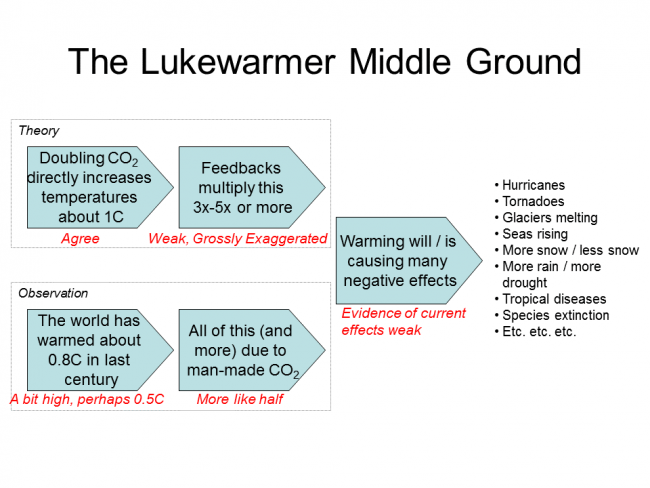
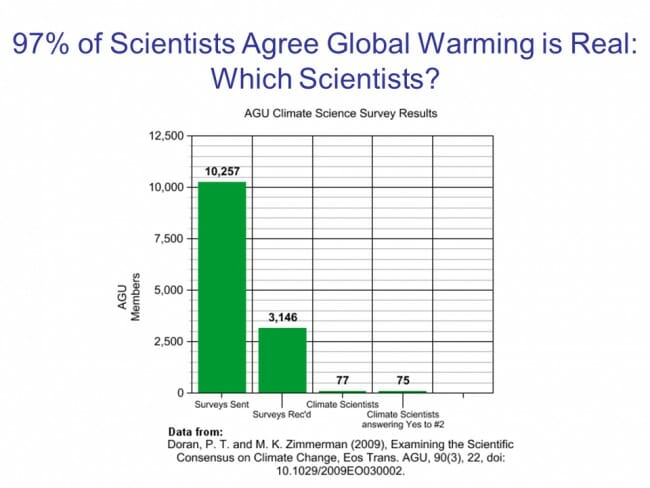


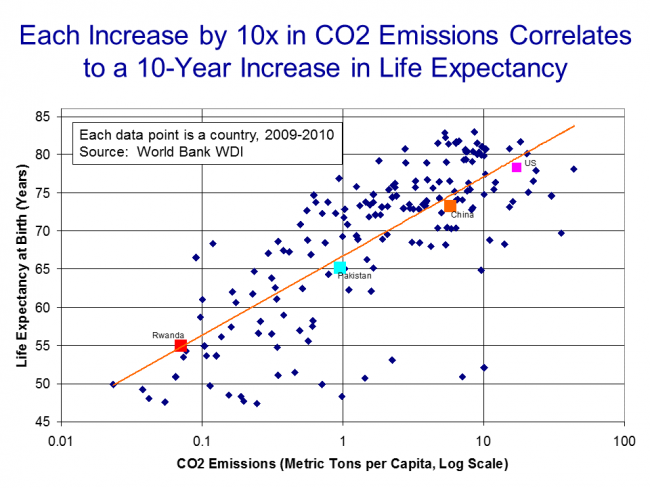

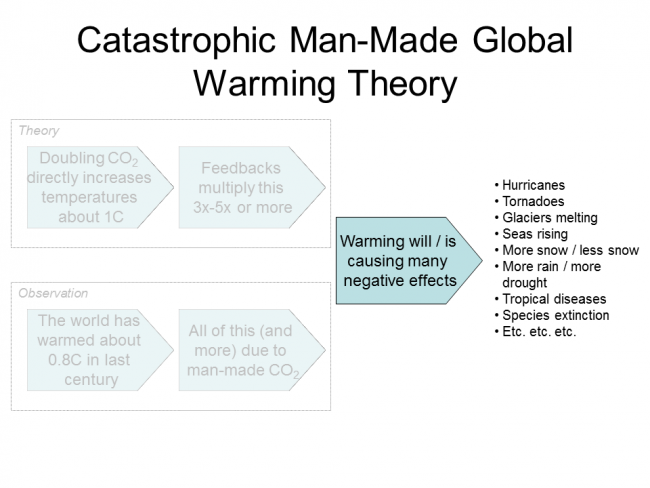

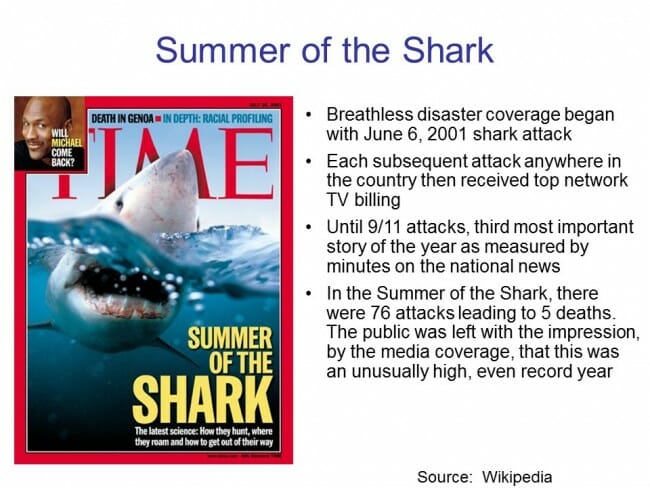



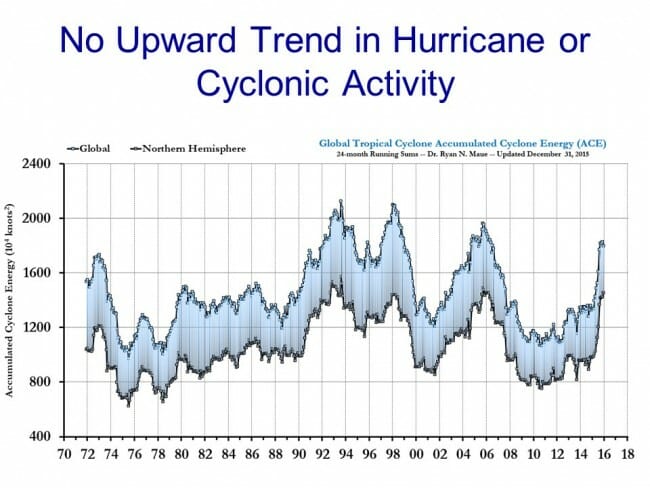
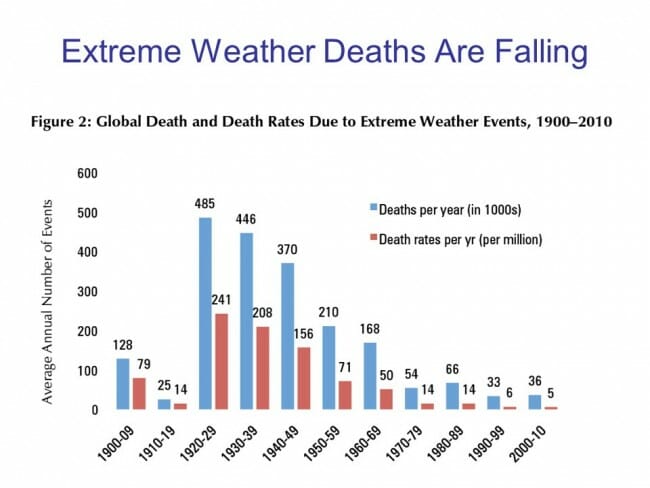

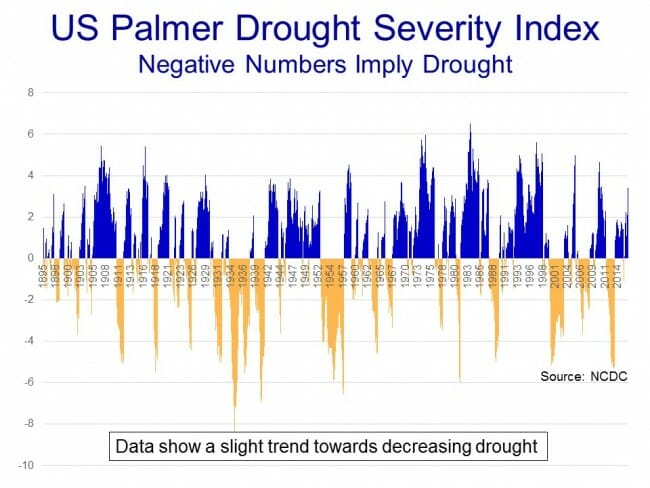

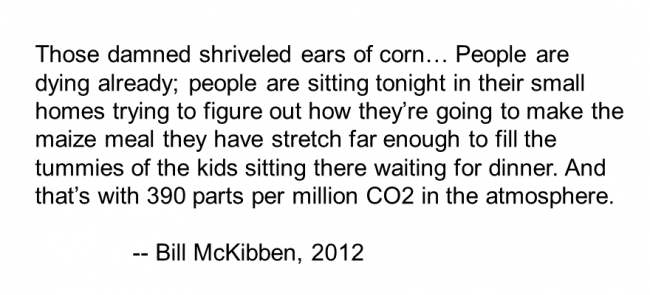

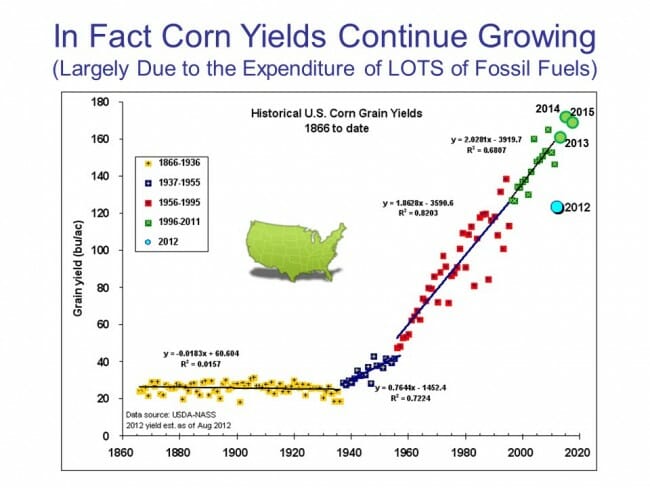

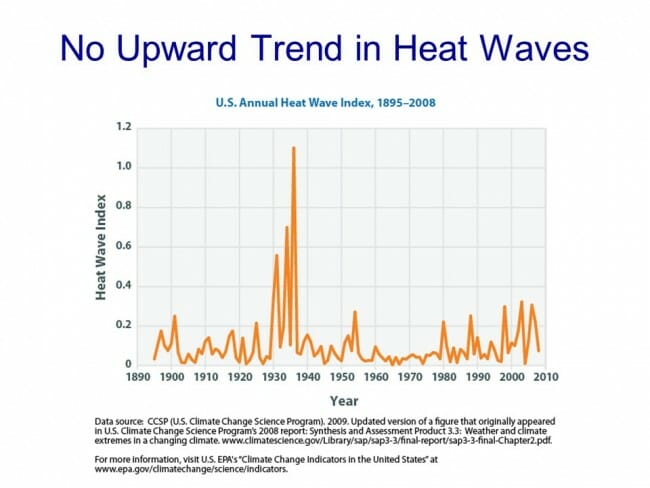
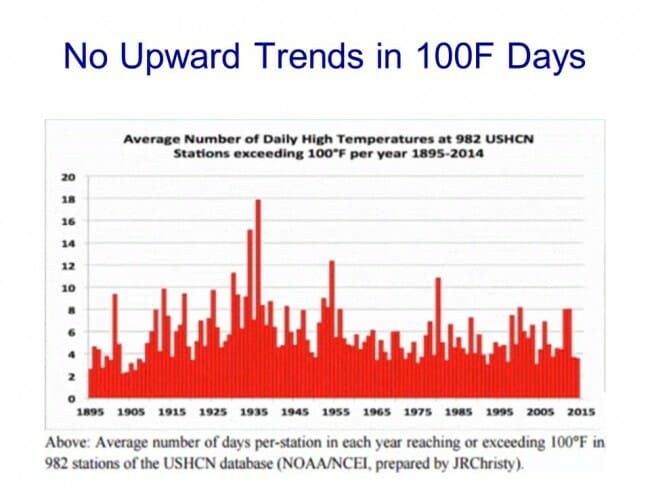
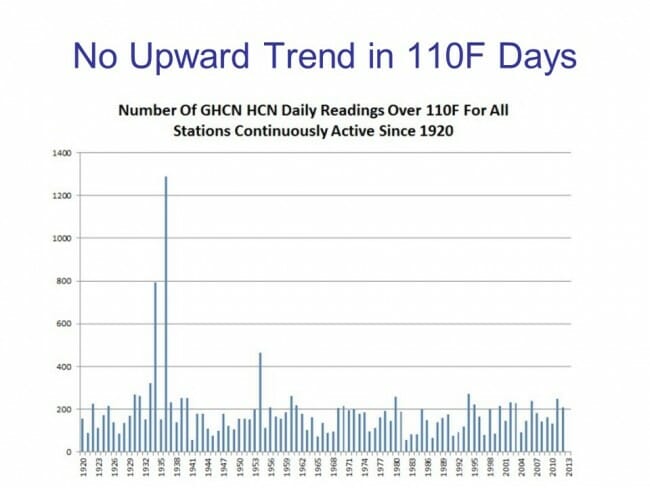
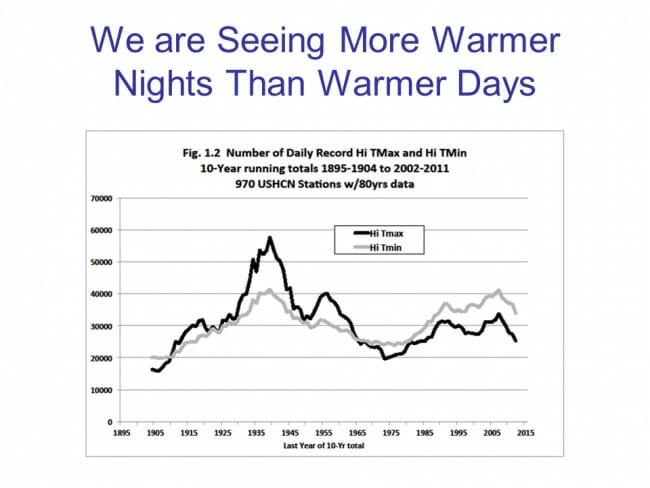
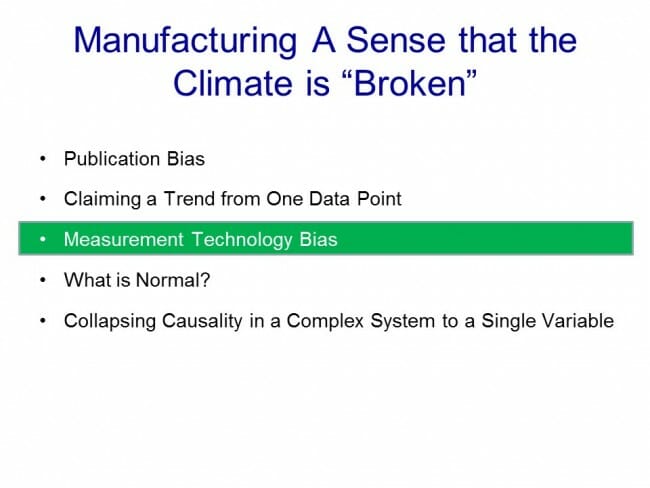
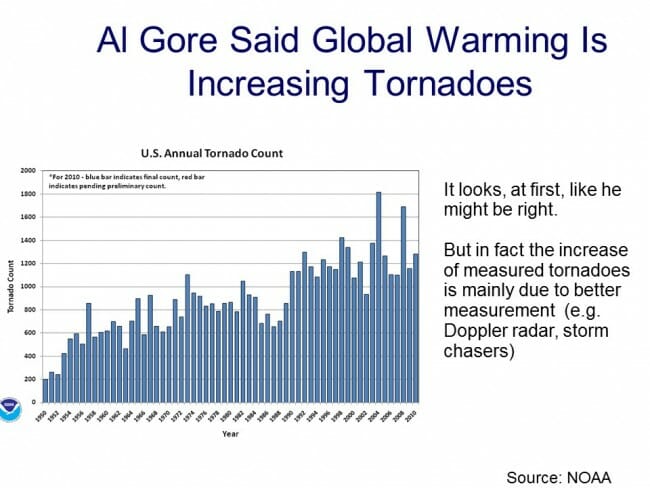
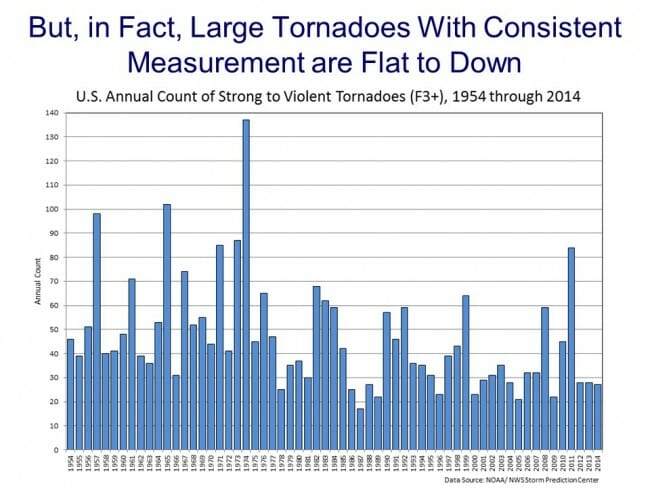
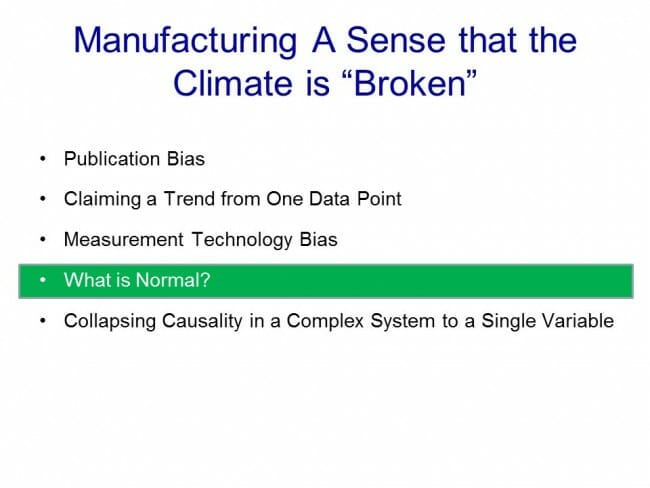

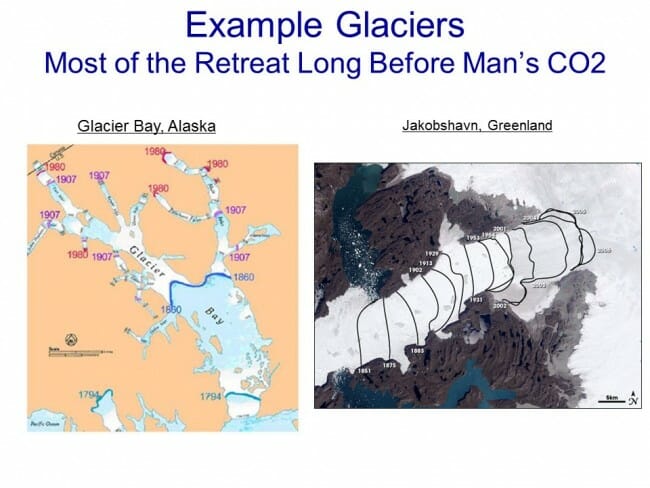
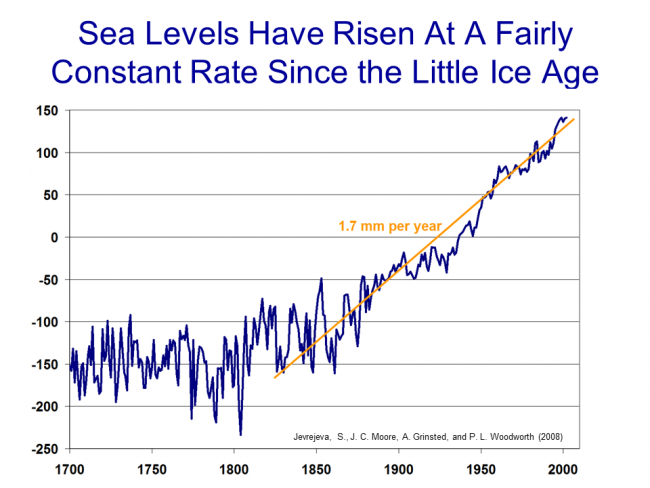



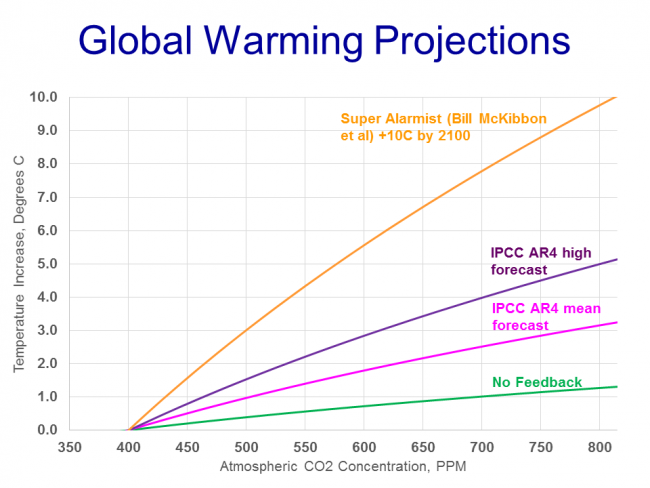
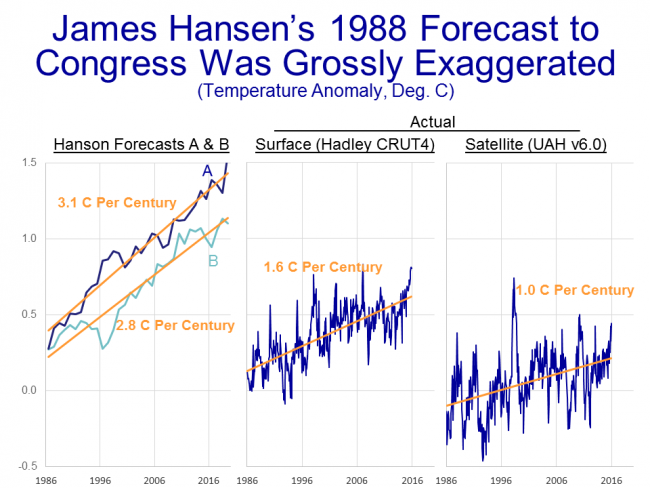
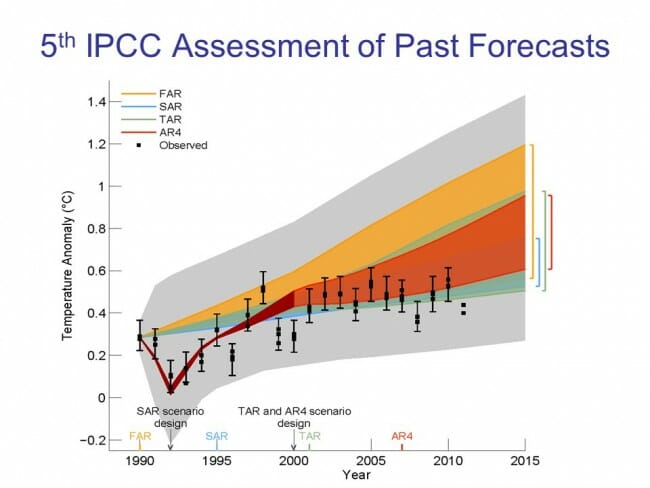
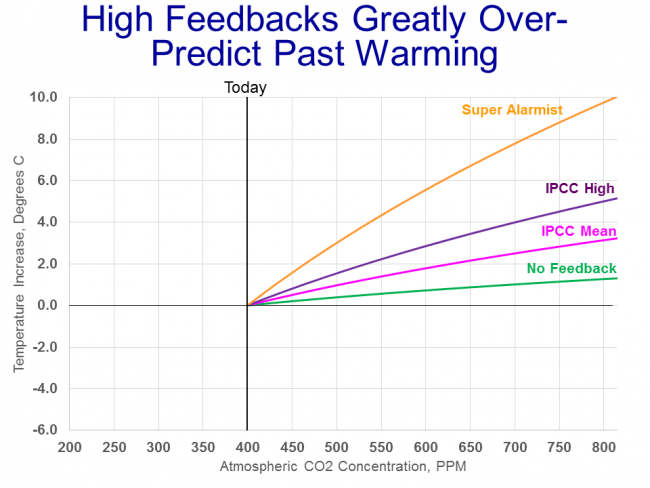
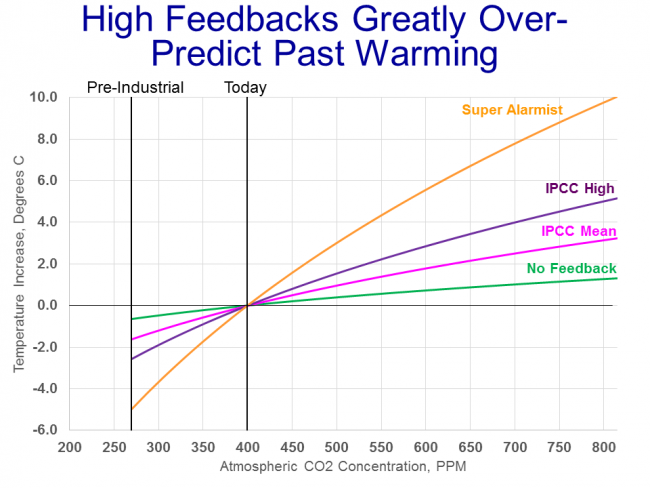


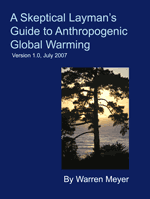





 So, is it reasonable to assume these feedback loops?
So, is it reasonable to assume these feedback loops?
 The blue band is without anthropogenic effects.
The blue band is without anthropogenic effects.